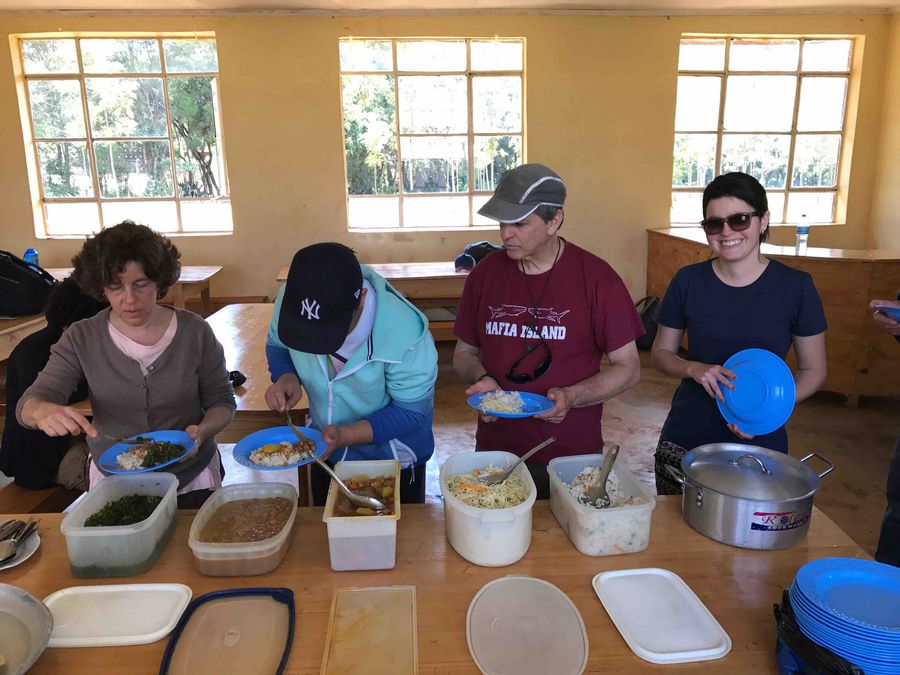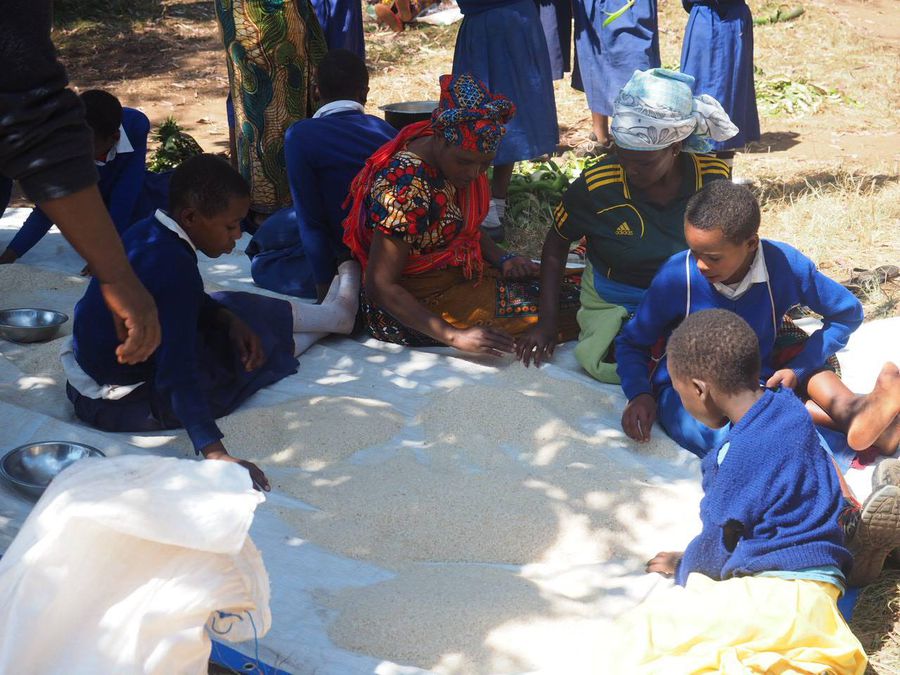What do all these words -wali na maharagwe, arroz e feijão, rice and beans - have in common? It is the perfect combination of two incredible ingredients that made us Brazilians feel like home right at our first meal in Tanzania. It means warmth and affection, and we knew that every meal was made with love.
We grew up in Brazil sitting down for lunch everyday with our families to eat such a perfect match – rice and beans - accompanied with raw salad and protein. I was shocked to see that the most common Brazilian dish, which is part of our culture and base of our meals, was also the main source of energy for the Tanzanian people. Once again, we saw how close we were and how similar our life can be, although separated by thousands of kilometers and the Atlantic Ocean.
The saying “Every Brazilian has a foot in Africa” made a lot of sense to us during this trip, and it might explain why good memories accompany us during all the moments eating together with volunteers and members of the community.
Once we arrived at the site where the second building of Bacho Primary School was being built, all volunteers would cautiously hear the instructions of the foreman picked up by voting in the night before to run the activities and organize what had to be done with the bricklayer. After 3-4 hour passing countless stone bucket, bricks and sand, without prejudice to the Chinese whispers game, which we have never completed a sentence, but it guaranteed a lot of fun, made us starve! So, when we saw the little car driving through the dirty road, bringing our hot delicious food, everyone ran to wash hands and enjoy the one-hour break to eat and chill. And nothing better than rice and beans to get our energy back.

By 1:30pm, the foreman reorganized the activities and we all got back to work. Between many jokes and games, which was amazing to see different kind of nationalities playing all together, we could observe the progress of our hard work, while the floor was getting solid and walls were being erected at an impressive speed! Certainly, the strength provided by such delicious meal contributed directly to achieve the success projected by the foreman to that day.
It is dinner time at the half-light of the dining room. As the Agricultural Training Center had light for 2 hours during the night, the warm atmosphere created by the dim yellow light provided a very pleasant environment – and of course, after a day at work, we were all crazy about dinner. While we were chatting about the highlights of our day and pouring the very hot food, we got calm down and enjoyed our rice and beans.
Just like in Brazil, rice and beans is part of every lunch and dinner, accompanied by vegetables like kale, peas or scarlet eggplant, banana, fried potato and cooked meat. For those who like it, ketchup and spicy sauce also could be included in the huge mountain of food in the plate.
The food seasoning given by the kitchen staff was different when compared to the Brazilian way of doing it. Putting cardamom in the rice was creative, because we use fried onion and garlic instead. The kitchen staff worked in a different layout of kitchen, cooking the rice and beans on wood stove (a very ancient way, but as my grandmother would say, there is no better food than the one made on a wood stove). Sometimes, the beans were cooked with carrots and the touch given by the orange color reflected the intensity of the colors from the clothes and scarves worn by the community and the Maasai people, a semi-nomadic group who inhabits a nearby area and granted us a visit one night.

Eating rice and beans every day in Dareda Village got me confused when I got home. Usually after long trips to remote areas of the world, I want to arrive home as soon as possible to eat the rice and beans cooked by my mom, but not this time: I really felt at home in Africa.


